Are you sure you want to delete all items?
Path of Exile (POE) Game Developer Interview Summary: there are still many things to look forward to!
Feb-28-2024
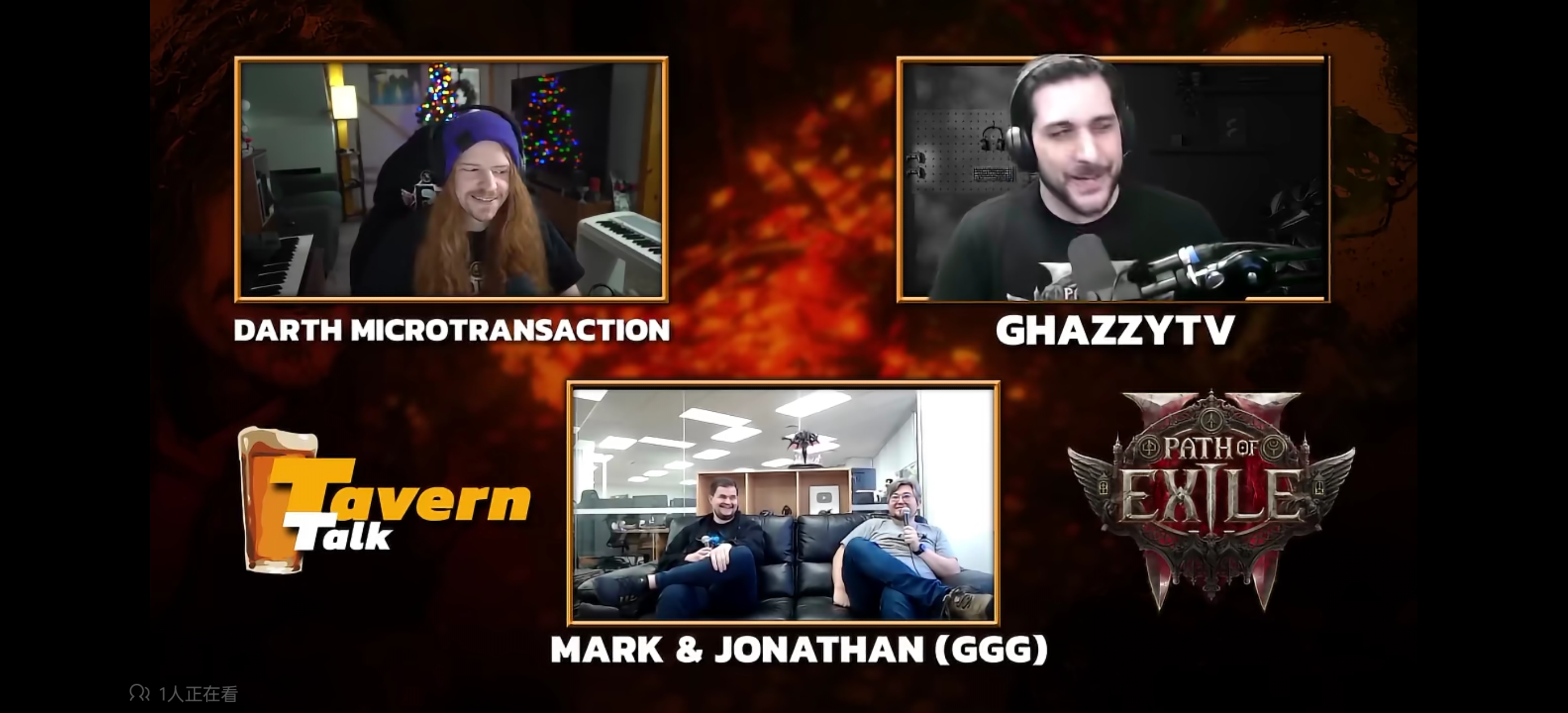
Game System:
The decision to split the game was made because there were too many changes desired that were restricted by the original game's framework. Creating a sequel allows for more player choice.
The Beta in June will feature a temporary ending, followed by the introduction of end-game content. However, it is already a very substantial amount of game content.
Graphical clarity is a top priority. There are some plans for configuration or resource allocation, but nothing has been finalized yet.
Cross-platform play and shared progress are currently not feasible due to console agreements.
Death records are still not possible due to many factors that need to be considered. Perhaps logs will be provided for players to develop third-party tools to review the causes of death.
The illuminated area now includes a feature that lights up the minimap, and minimap markers such as waypoints will not appear until you enter the illuminated area.
Piety is dead.
Pause Mechanism:
Single-player games can be paused at any time, and multiplayer games can also be paused if no other players are on the map.
If all players on the same map pause in a multiplayer game, the game can also pause.
While paused, you can view any information such as current Debuffs, skills, etc., or reply to messages.
This allows you to check the real-time damage values during combat.
For now, opening a full-screen window, such as the talent tree, is considered to activate the pause.
If the server detects that the client is not sending packets, it will be deemed disconnected, and the game will pause for you.
Main Storyline:
Each character must complete their own main storyline. If you cannot defeat the main bosses, the storyline will not progress.
The main storyline is currently estimated to take 40-50 hours, but this time will inevitably decrease as players become familiar with the game.
Death penalties will only apply after the completion of a main stage and will become more severe at higher stages.
Since the early stages of the main storyline lack blue and yellow monsters, some values will be reduced, and places similar to record points will be placed to replenish potions.
Faction Mechanism:
To increase content diversity, different mechanisms will have unique rewards that cannot be obtained elsewhere.
Fate cards have been temporarily removed and are still looking for alternative or modified solutions.
More non-ARPG type mini-games will be added to provide players with more content that deviates from the main game. Some people like it, some don't.
When mechanisms enter the core, some modifications will be made, and players can freely choose whether to participate, so it's not a big problem.
The sequel may have infinite zoom content, but not all content will be like this.
Any current faction may still provide a large number of character abilities, but it will not be permanent.
After the release of the sequel, it should be possible to return to a 3-month faction cycle. The pattern could be one month for the first game, two months for the second game, and then back to the first game, alternating updates.
Towns/Shops/Hideouts/Market Items:
The sequel will still have hideouts, but with added features to make them more interesting.
Mark's spoiler: There will be tower defense hideouts where you can play mini-games.
When returning to town, you will need to use well water to replenish potions. If this design is hated by everyone, it might be modified.
Some merchants will offer free identification services, and the number of identification scroll drops will be reduced.
DM suggested that if a merchant identifies high rarity item properties, there will be special effects, and Jonathan said he would consider the feasibility.
Some merchants will offer gold gambling functions to obtain equipment for specific body parts.
Gambling will not be the main source of equipment but a possible choice; it cannot replace drops.
Merchants will still have currency exchange formulas, but they will be unprofitable transactions.
All character MTX will be inherited, but of course, it may disrupt the immersive experience of the game, and we are powerless to prevent this.
Crafting pages will continue, but if mechanisms (such as essence) have not yet been added, they will be hidden until they enter the core.
It is still uncertain how fate card crafting pages will be handled.
Skills:
Not all skills can use "Move While Attacking Support," which carries a 50% movement speed penalty.
Each class has a set of skills/combat styles designed, but all skills can still be used by any class.
(Templar) The Light of Justice in the sequel is not a skill but can be achieved through various mechanisms that stack similar effects.
(Sorceress) Summoning will receive more attention in the sequel. There will be many changes, and a sorceress showcase video will be announced soon.
The sequel will still have systems similar to transformation gems, and Val gems will perform better than in the first game.
Val gems and original gems have been separated and can be linked to different support gems independently.
Support gems mainly change the way skills are cast and partially increase damage.
To avoid certain support gems being considered essential, any additional damage must be obtained from the talent tree.
Talents/Ascendancy:
Free talent respecs will not be provided.
Generally speaking, there won't be severe misconfigurations of talents; consideration can be given when specialized talents are provided later in the game.
Hovering over a talent will display the actual increased damage or defense values, including damages from totems and summoned creatures that were unable to be displayed in the previous version (excluding temporary damage changes like curses).
The talent tree will offer an option for exporting/importing builds, which is hidden by default until the player imports a build for the first time.
There is no labyrinth in the sequel, but certain events in chapters two, three, and four grant two points of Ascendancy, with an additional two points available in the Otherworld Atlas.
Ascendancy will enhance specific combat styles, but most modifiers are global and can be applied to skills of other combat styles.
Combat Styles/Builds:
Glass cannon builds will not be viable in the sequel; players still need some defense or survival mechanisms.
Immunity to effects like freezing or stunning is unnecessary, but can still be achieved by sacrificing a lot of other things.
Being stunned will still feel restrained, but we aim to create a frontline combat experience.
It's still possible to have builds with 10+ legendary items, but most builds will be a combination of a few legendaries with rare items.
The concept of dual-wielding different weapon types is interesting and may be explored in the future.
Dual-wielding can specialize in damage and curses separately, or combine fire skills with burning for high damage.
Using weapon set A to cast spell totems, then switching to weapon set B, the totems will continue to use the spells from set A.
Weapon set A can stun enemies, then weapon set B can deal massive damage to stunned enemies.
Weapons will be balanced to encourage players to use different types of weapons in both weapon sets.
Attack, defense, and loot are three aspects that will require trade-offs and choices.
In terms of combat numbers, equipment provides base values, while auras and the talent tree provide bonuses.
Base life modifiers on the talent tree have been removed.
Skills like Fortitude/Grace that provide base value modifiers have also been removed.
Removing mana reserves in favor of the spirit system makes mana more important, reduces the burden on mana-based playstyles, and increases options.
Support gems can preserve a portion of life to reduce spirit reserve consumption.
The reserve system is designed for players to use without needing to compress other resources.
Spirit comes from main quest rewards, the talent tree, and amulets and staves. Staves are primarily weapons for summoning-focused playstyles.
Blocking mainly comes from off-hand shields, requiring players to sacrifice off-hand damage for this defensive mechanism.
Energy shields are a defensive mecha nism closer to life, and in the sequel, energy shields no longer instantly recharge upon taking damage, as the delay before recharging makes it an unreliable buffer against damage.
One-click clearing is still possible, but may not be as efficient as skill combinations.
A new support gem allows "cast on dodge roll."
Melee totems providing additional damage modifiers will inevitably be removed, leaving them solely as damage-enhancing abilities.
Combat:
Potions become a defensive resource for specific situations, and normal enemies will not charge them, so players can't keep potions active at all times.
Each skill/action has animations designed with different speeds, keeping players in a state of conservation of momentum without sudden stops and attacks.
In the mercenary showcase video, the massive damage to bosses was achieved by correctly stacking various skill effects, not debuff stacking, and players can replicate it after learning the boss mechanics.
The difficulty of multiplayer combat will not differ significantly from single-player unless there is excellent coordination and cooperation among players.
Opening portals during boss fights has a fixed 2.5-second casting time, while elsewhere, portals are still instantaneous.
Players can log out at any time, but boss fights will reset, requiring a successful challenge in one go.
The pace of combat will inevitably be slower than in the first game, but with conservation of momentum, players will experience a smooth flow without feeling too slow.
All non-permanent things (like projectiles or temporary summons) will have snapshots, while permanent effects like zombies will change damage in real-time with weapon swaps.
The buffer for one-shot deaths from massive damage is too short, but instead of increasing its duration, there will be a buffer period from potions or instant life recovery, though the closer to zero health, the shorter this time.
The possibility of "no sustained death effects when the last enemy dies" will be considered for enemy death effects.
Pushing and Collision System:
Characters and each monster and skill have a push value.
High push values can move objects with low push values.
Knockback now has more composite effects; multiple projectiles count as one larger push value.
Pushing something with a high push value may only slightly move it back, but pushing something with a low push value may push it far into a corner.
There is no cloak in the sequel; players need to use tools/skills to escape encirclement.
Most mobility skills have push values; auto-pathfinding considers them impassable through groups, but using the skill might allow squeezing through.
Players become larger when sprinting, increasing their push value.
Dodge rolls only have invincibility for movement and melee attacks and cannot roll over groups of enemies.
The sequel aims to achieve physical characteristics similar to other action games, avoiding overlapping objects as much as possible.
Stun:
Pushing and being stunned have no interaction with each other; they are two separate things.
When pushed, attacks will be interrupted, but after the interruption, abilities like the Monk's Spinning Attack will resume execution.
The only reason an enemy stops attacking after being pushed is if they are out of attack range. They will resume their attack once they re-enter the range.
Immunity to stun should be an option, not a necessity.
If casting is interrupted by a stun, it won't deduct the full mana cost.
Cooldowns only start to count after passing a certain point in the casting action.
There are very few cooldown skills in the sequel.
The duration of stun caused by enemies to players is very short, and each stun increases the threshold for the next one.
Wraeclast:
The suffixes on the map allow you to know the rewards just by seeing them.
There will be a way to change the map similar to the ARPG talent tree, though the plan is not yet confirmed, it will definitely exist.
There will be ultimate bosses, but not like in the first game where you could access them just by allocating points.
Ultimate bosses and their normal versions will have separate tickets, and their exclusive drops will also differ.
All bosses are not designed to be one-shot, but players will inevitably find ways to dominate them. The challenge of subsequent content will be increased according to the player's ability.
The size of monster groups will be reduced and won't be as crazy as before.
Fragments, shards, and pieces will still exist as tools for customization.
Drops:
The sequel focuses on the value rather than the quantity of drops.
The loot filter suffix still exists, but its capacity to increase item quantities has been significantly reduced.
Players have designed excellent filter websites, and while the game won't have this feature built-in, theoretically, there's no need for filters in the sequel.
Every item has a complex formula to calculate and quantify its value.
Compared to casual players, high-end players can obtain drops that are up to 1000 times more valuable in the same amount of time.
Whether high drop rates correlate with high rarity suffixes remains a secret.
A map's sources of drops are divided into thirds: bosses, minions, and mechanisms, so expect to spend about a third of your time in boss battles.
Gold drops also contribute to the value of items, but it can be used to obtain specific equipment parts, offering the possibility of gear changes.
POE doesn't have a system like Diablo's wisdom drops (dropping gear for your current class), hoping players will trade with each other.
Crafting:
The crafting bench will not be removed.
There will be various crafting methods available in different places. These are optional tools, replaceable with each other, and players don't need to unlock or use all of them to get good gear.
The pool of item suffixes has been modified, with weapons focusing more on damage, no resistances, gloves focusing on casting or attacking, helmets having hit or critical strike, and shoes naturally focusing on movement speed. Overall, the number of suffixes has been reduced, similar to when the first game was released.
Chaos stones changing to +1-1 is to make players value the suffixes of acquired equipment rather than just the base.
This change allows suffixes like Temple or Quarry to be utilized more effectively.
When picking up an item, consider how crafting can make it useful instead of discarding it if it's not needed.
In the sequel, the perfect defense value system for items still exists and remains a goal to pursue.
QoL:
The store system will be updated to provide a MIX try-on preview feature. This change also applies to the first game.
The user interface will allow customization of Buff/Debuff positions, but it's not guaranteed to be available at launch.
Enemies' corpse explosions will have a visual cue before detonation, with longer flashing indicating higher damage. This change also applies to the first game.
The Alt key for examining ground items will offer the function to bind to other keys.
Additional features will be added, such as in trading, Ctrl+Shift+left-click on currency to put an entire page of it up for trade.
Additional features will be added, such as using chainstones or craftsman stones, Shift+left-click and hold on items to automatically use them continuously at a certain rate.
The above two features may not be available in version 3.24.
The sequel will slightly increase the pickup range to allow players to avoid standing on burning ground to pick up items.
RaizQT hopes to add a time-pickup key like controllers, Jonathan tends to deny it, but says he'll consider it again.
There might be a setting available in WASD mode to disable moving with the left mouse button.
Recommended news
-
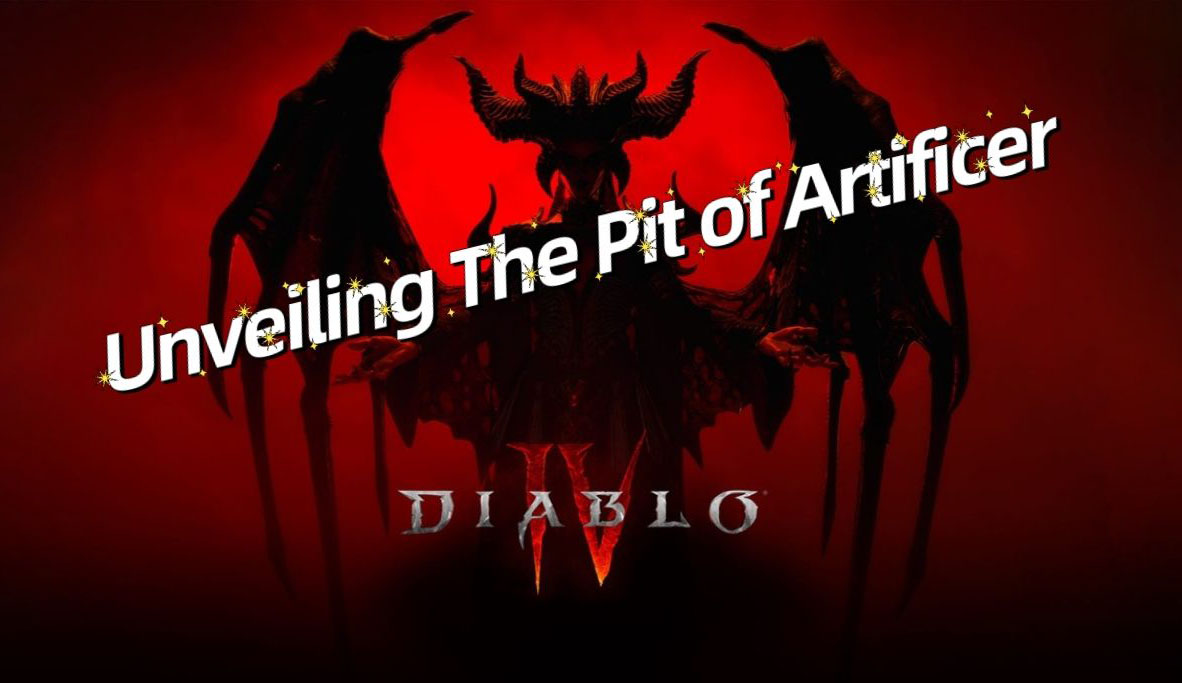
Diablo 4 Season 4: Unveiling The Pit Of Artificers - A Race Against Time In The Endgame
Apr-27-2024 -
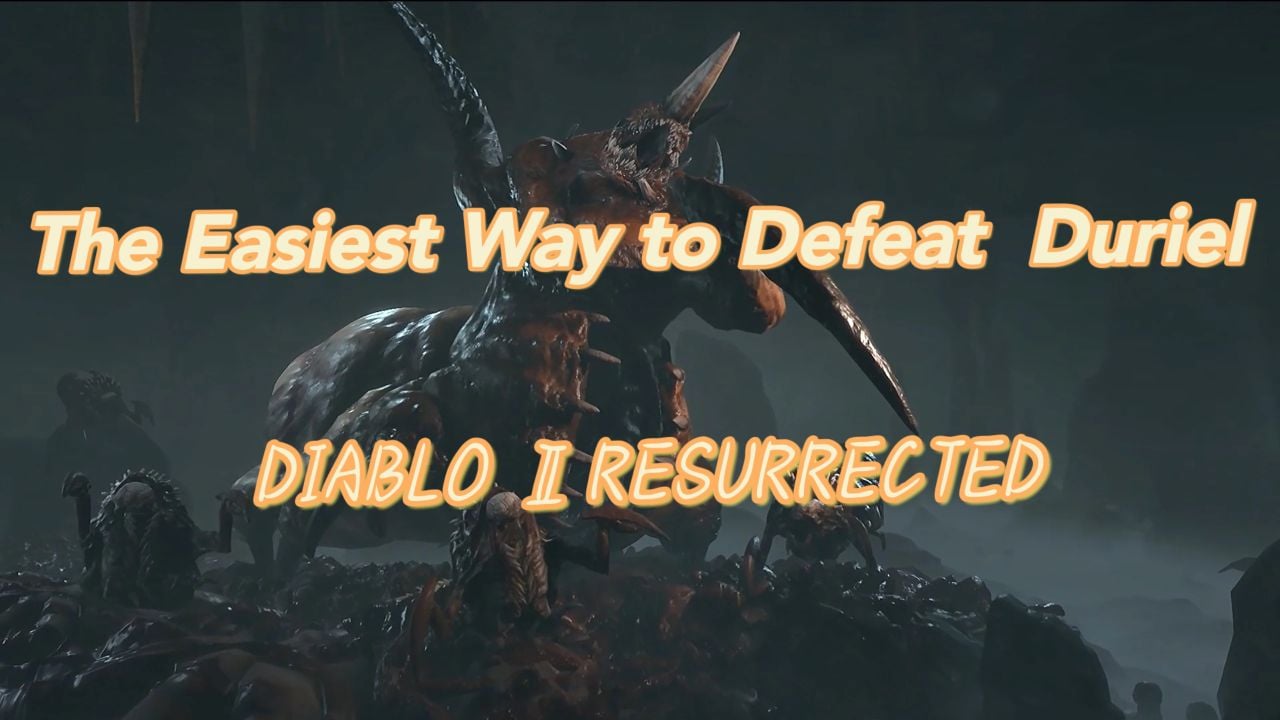
The Easiest Way to Defeat Duriel In Diablo II Resurrected.
Apr-26-2024 -
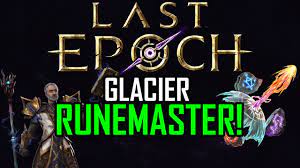
Last Epoch:Best Glacier Runemaster Guide
Apr-24-2024 -
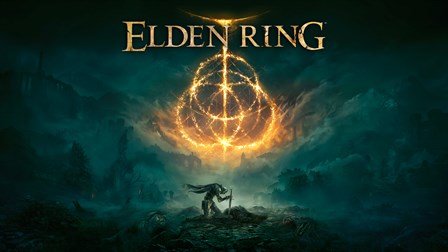
Elden Ring: Leyndell Sewers Leyndell Catacombs Detailed Walkthrough
Apr-23-2024 -

Path of Exile 3.24: Fast and Effectively Farming POE Orbs.
Apr-22-2024 -
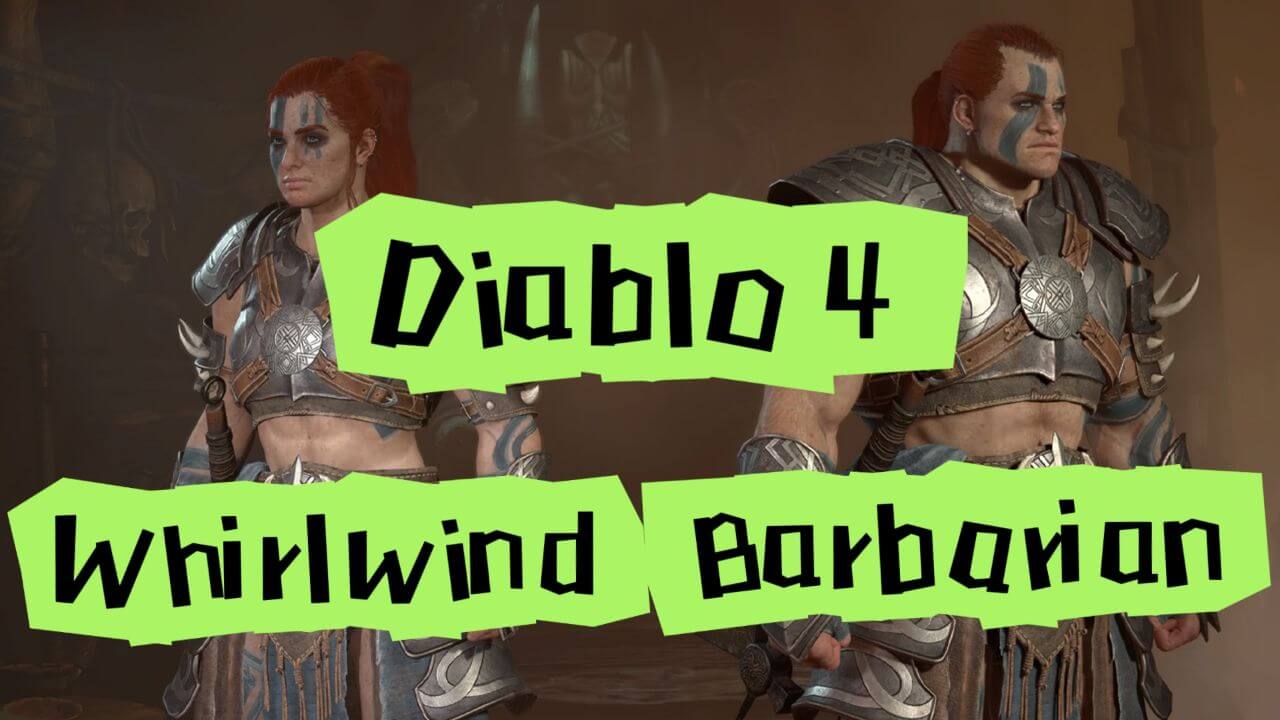
The Best Diablo 4 Whirlwind Barbarian Build
Apr-20-2024

SIGN UP








LOGIN



 Diablo 2: Resurrected
Diablo 2: Resurrected  Last Epoch
Last Epoch  Diablo 4
Diablo 4  Path Of Exile
Path Of Exile  Elden Ring
Elden Ring  WoW WotLK Classic
WoW WotLK Classic  Runescape
Runescape  Lost Ark
Lost Ark  WOW Classic SOD
WOW Classic SOD  Albion Online
Albion Online  SWTOR
SWTOR  Animal Crossing
Animal Crossing  Steam
Steam  Path of Exile 2
Path of Exile 2


















